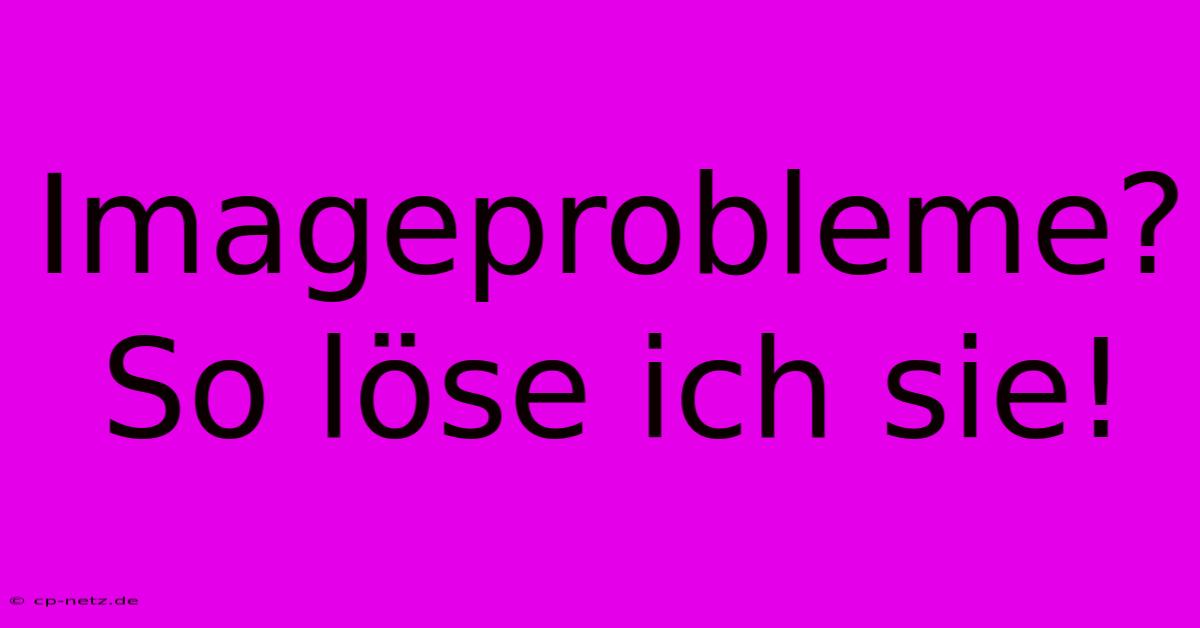Imageprobleme? So Löse Ich Sie!

Discover more detailed and exciting information on our website. Click the link below to start your adventure: Visit Best Website Imageprobleme? So Löse Ich Sie!. Don't miss out!
Table of Contents
Imageprobleme? So löse ich sie!
Hey Leute! Let's talk about something that's plagued me for years: image problems on websites. You know, those moments where your carefully chosen hero image looks like a blurry mess, or that cute product photo is, well, not cute on a smaller screen? Yeah, been there, done that, got the t-shirt (a slightly pixelated one, naturally).
My Biggest Image Fail (and What I Learned)
I remember this one time, I was so proud of my website. I'd spent weeks crafting the perfect blog post about sustainable living – seriously, it was amazing. I found this gorgeous image of a lush forest, totally free to use, right? Wrong. I didn't check the resolution. It looked fine on my big monitor, but on a phone? Yikes. It was like looking through a potato. My carefully curated content? Completely undermined by a blurry mess. The comments section? Let's just say it wasn't pretty. I felt like a total noob.
This disaster taught me a HUGE lesson: image optimization is crucial. It's not just about finding pretty pictures; it's about making sure they're the right size and format for every device.
The Right Size Matters (Seriously!)
One of the biggest mistakes beginners make is using images that are way too large. Think about it: a massive, high-resolution image takes ages to load, frustrating your readers and tanking your website's performance. Google hates slow loading times – it directly impacts your search engine ranking! (SEO nightmare!).
So, what's the solution? Image compression. There are tons of free online tools and plugins (like TinyPNG or ShortPixel) that can significantly reduce file size without noticeably impacting quality. I usually aim for images under 100kb. It’s a balancing act between quality and file size, but with practice, you get it down.
Choosing the Right Format
Another thing I messed up on in the beginning: image formats. JPEGs are great for photos, but PNGs are better for graphics with sharp lines and text, like logos. Using the wrong format can lead to blurry images or increased file size. I always double-check.
Alt Text: Your Image's Voice
Here's another crucial tip many forget: alt text. This is descriptive text that tells search engines (and screen readers used by people with visual impairments) what your image is about. Don't just write "image1.jpg"; describe the image. For example, if it's a picture of a cat in a basket, write something like "Cute tabby cat lounging in a wicker basket." Alt text improves SEO (yay!), making your images searchable and helping your website rank better.
Responsive Images: Adapting to Any Screen
Finally, make sure your images are responsive. This means they automatically adjust to different screen sizes, preventing those blurry nightmares. Most modern website builders and CMS platforms (like WordPress) handle responsive images automatically, but it's still worth checking!
So yeah, image optimization can be a bit of a headache, but trust me, it's worth the effort. Avoid my mistakes, and your website will be looking (and ranking) amazing in no time! Don't be afraid to experiment and find what works best for you. Remember, even the pros mess up sometimes – it's all part of the learning process. Happy optimizing!

Thank you for visiting our website wich cover about Imageprobleme? So Löse Ich Sie!. We hope the information provided has been useful to you. Feel free to contact us if you have any questions or need further assistance. See you next time and dont miss to bookmark.
Featured Posts
-
Winterthur Gegen Gc Der Ticker
Nov 23, 2024
-
Juventus Ticker Kampf Um Tabellenplatz
Nov 23, 2024
-
2 Bundesliga Heute Muenster Gegen Koeln Live
Nov 23, 2024
-
Rb Leipzig Startelf Gegen Hoffenheim
Nov 23, 2024
-
Baerbock Privatleben Im Fokus
Nov 23, 2024
